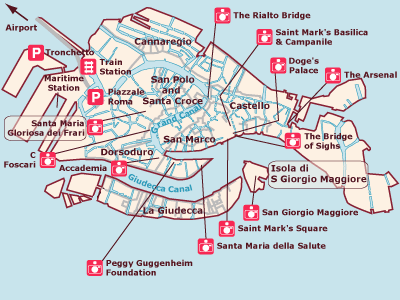Expansion
In 697 the Venetians organized Venice as a republic under an elected doge. Internal dissension disturbed the course of government during the following century, but the threat of foreign invasion united the Venetians. Attacks by Saracens in 836 and by the Hungarians in 900 were repulsed. In 991 Venice signed a commercial treaty with the Saracens, initiating the Venetian policy of trading with the Muslims rather than fighting them. The Crusades and the resulting development of trade with Asia led to the establishment of Venice as the greatest commercial center for trade with the East. The republic greatly profited from the partition of the Byzantine Empire in 1204 and became politically the strongest European power in the Mediterranean region. The growth of a wealthy aristocracy gave rise to an attempt by the nobles to acquire political dominance, and, although nominally a republic, Venice became a rigid oligarchy by the end of the 13th century. In the 13th and 14th centuries Venice was involved in a series of wars with Genoa, its chief commercial rival. In the war of 1378-1381, Genoa was compelled to acknowledge Venetian supremacy. Wars of conquest enabled Venice to acquire neighboring territories, and by the late 15th century, the city-state was the leading maritime power in the Christian world..

The beginning of Turkish invasions in the middle of the 15th century
marked the end of Venetian greatness. Thereafter, faced with attacks by
foreign invaders and other Italian states, its power faded, and the discovery
of a sea route to the Indies around the Cape of Good Hope by the Portuguese
navigator Vasco da Gama in 1497-1498 accelerated the decline. In 1508 the Holy
Roman Empire, the pope, France, and Spain combined against Venice in the League of
Cambrai and divided the Venetian possessions among themselves, and although Venice
reacquired its Italian dominions through astute diplomacy in 1516, it never regained
its political power.
In 1797 the Venetian Republic was conquered and ended by Napoleon Bonaparte, who turned the
territory over to Austria. In 1805 Austria was compelled to yield Venice to the French-controlled
kingdom of Italy but regained it in 1814. A year later Venice and Lombardy (Lombardia) were combined
to form the Lombardo-Venetia Kingdom. The Venetians, under the Italian statesman Daniele Manin,
revolted against Austrian rule in 1848, and a new republic was established. Austria, however, reestablished
control a year later. In 1866, after the Seven Weeks' War, Venice became part of the newly established kingdom of Italy.
Population (2005 estimate) 271,251.
Back to top